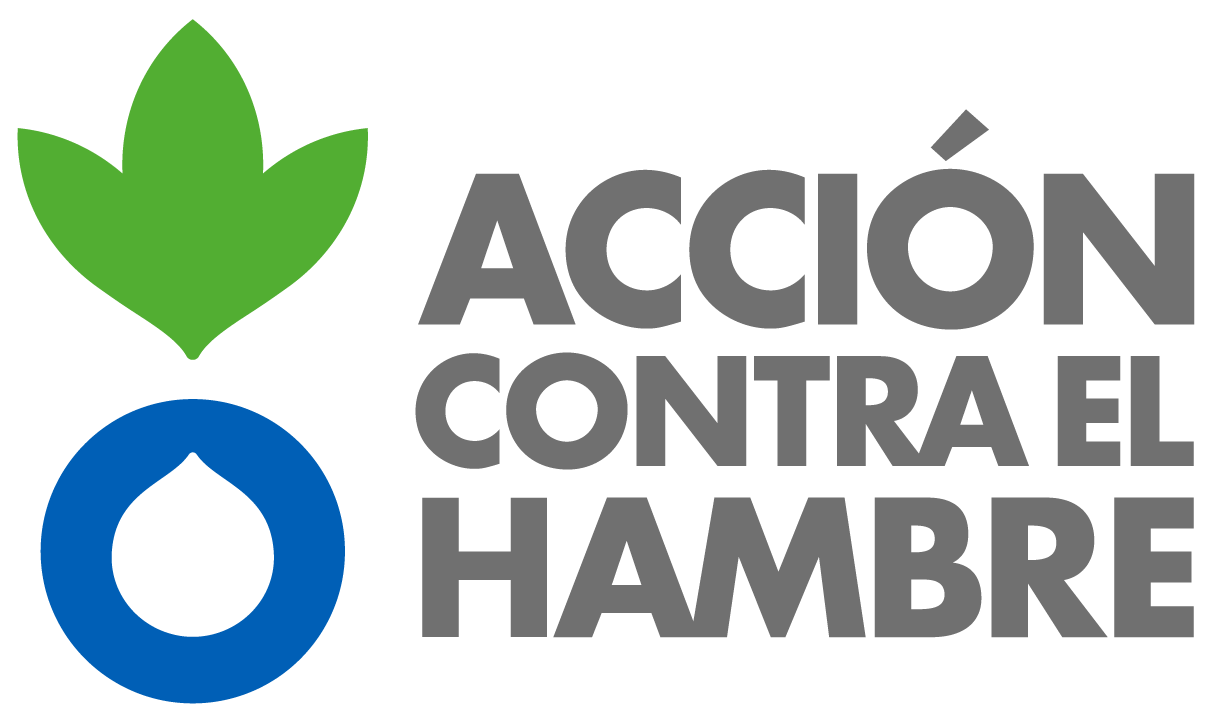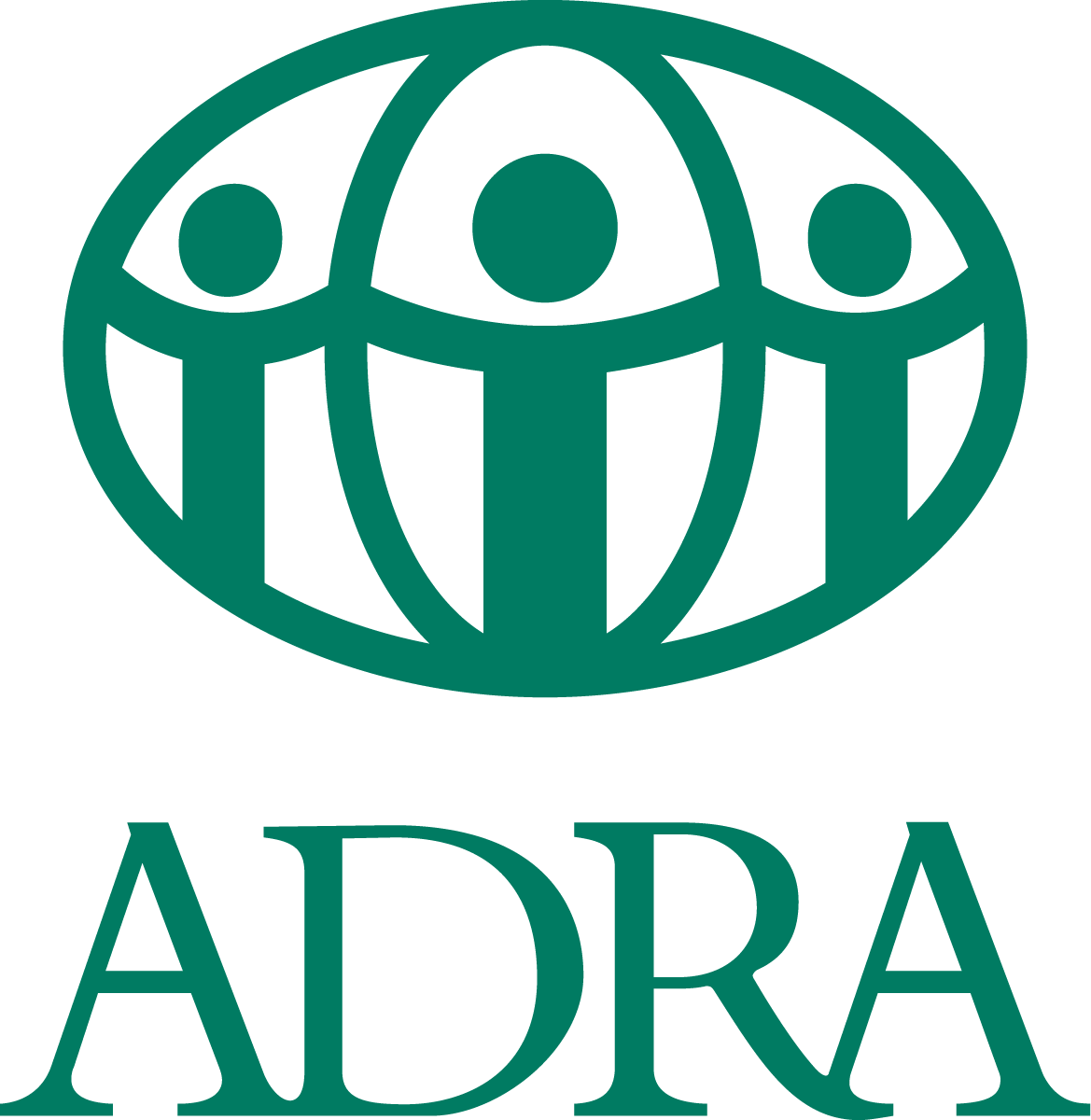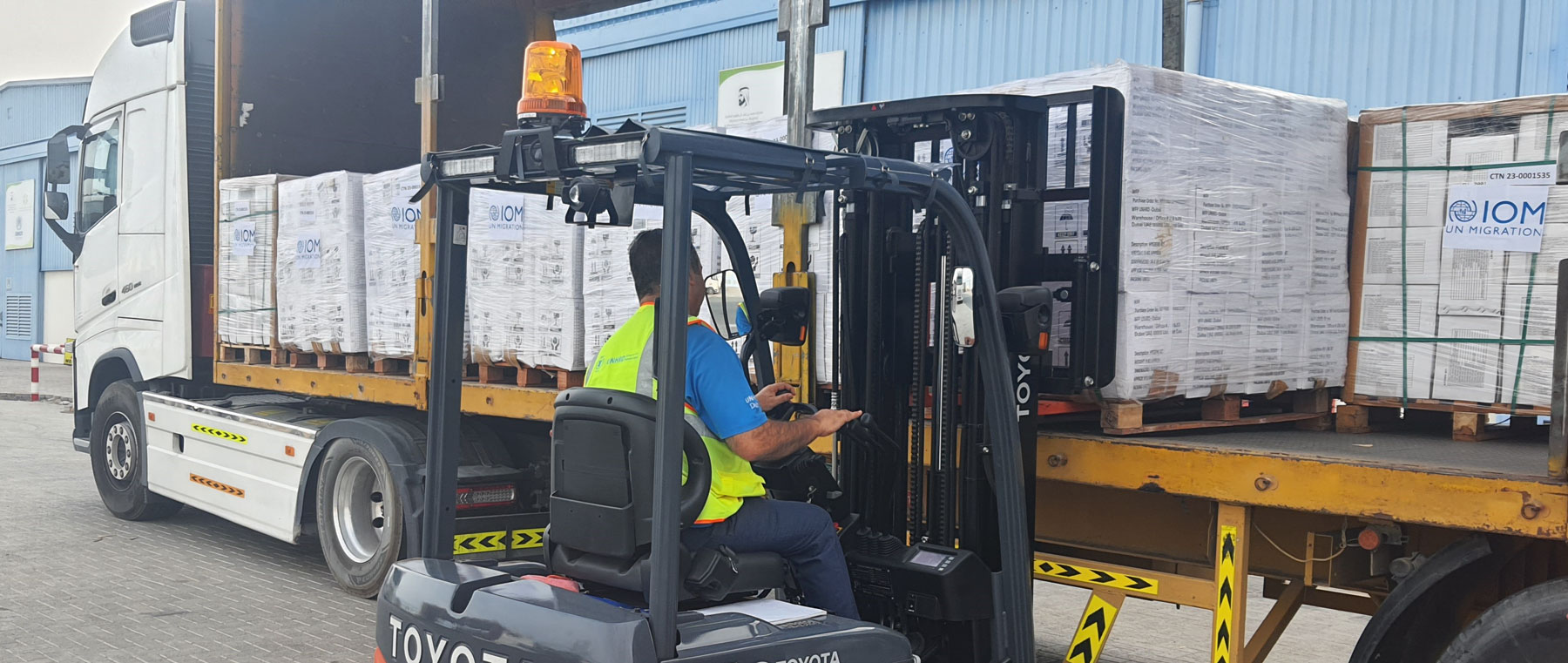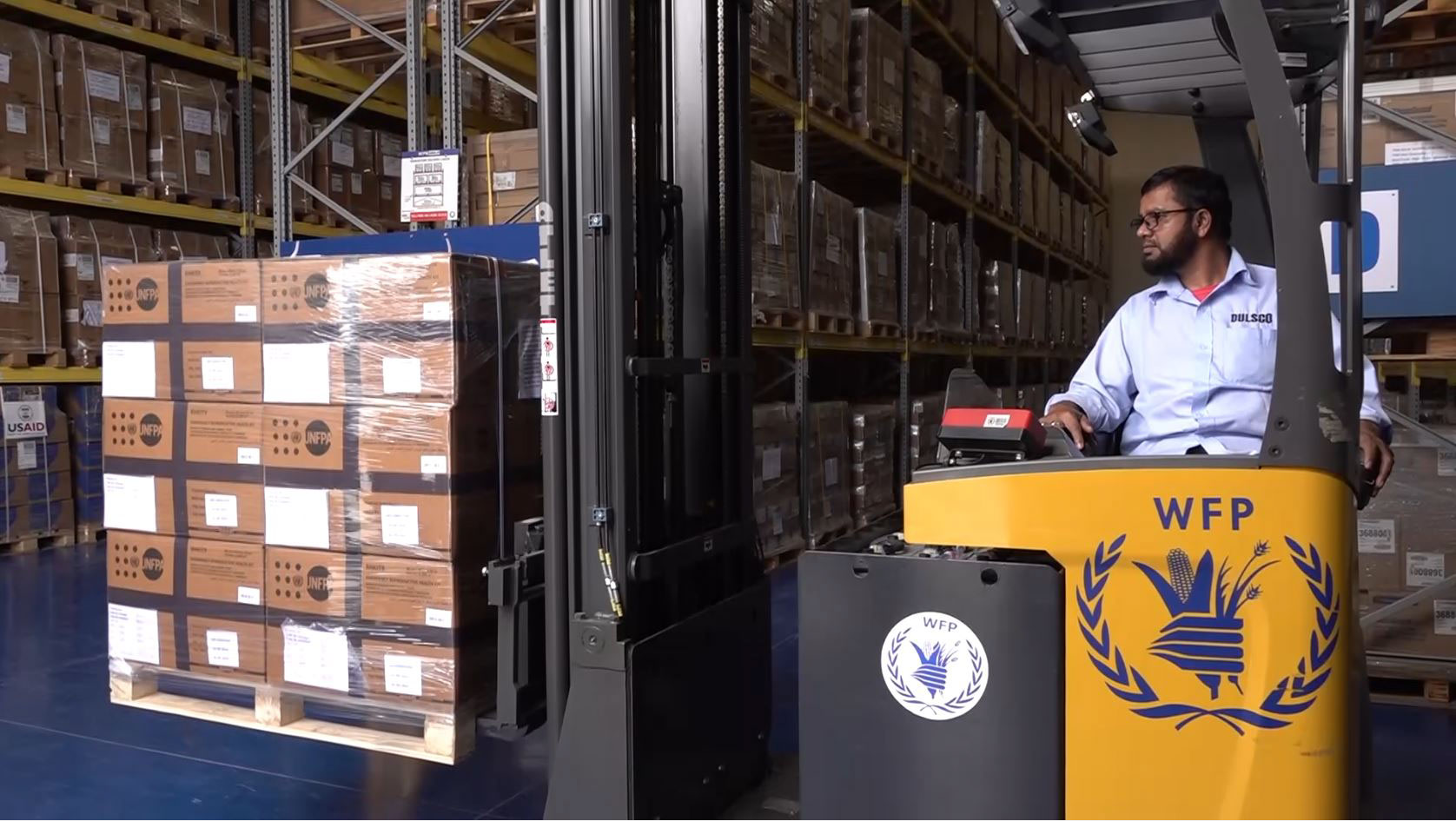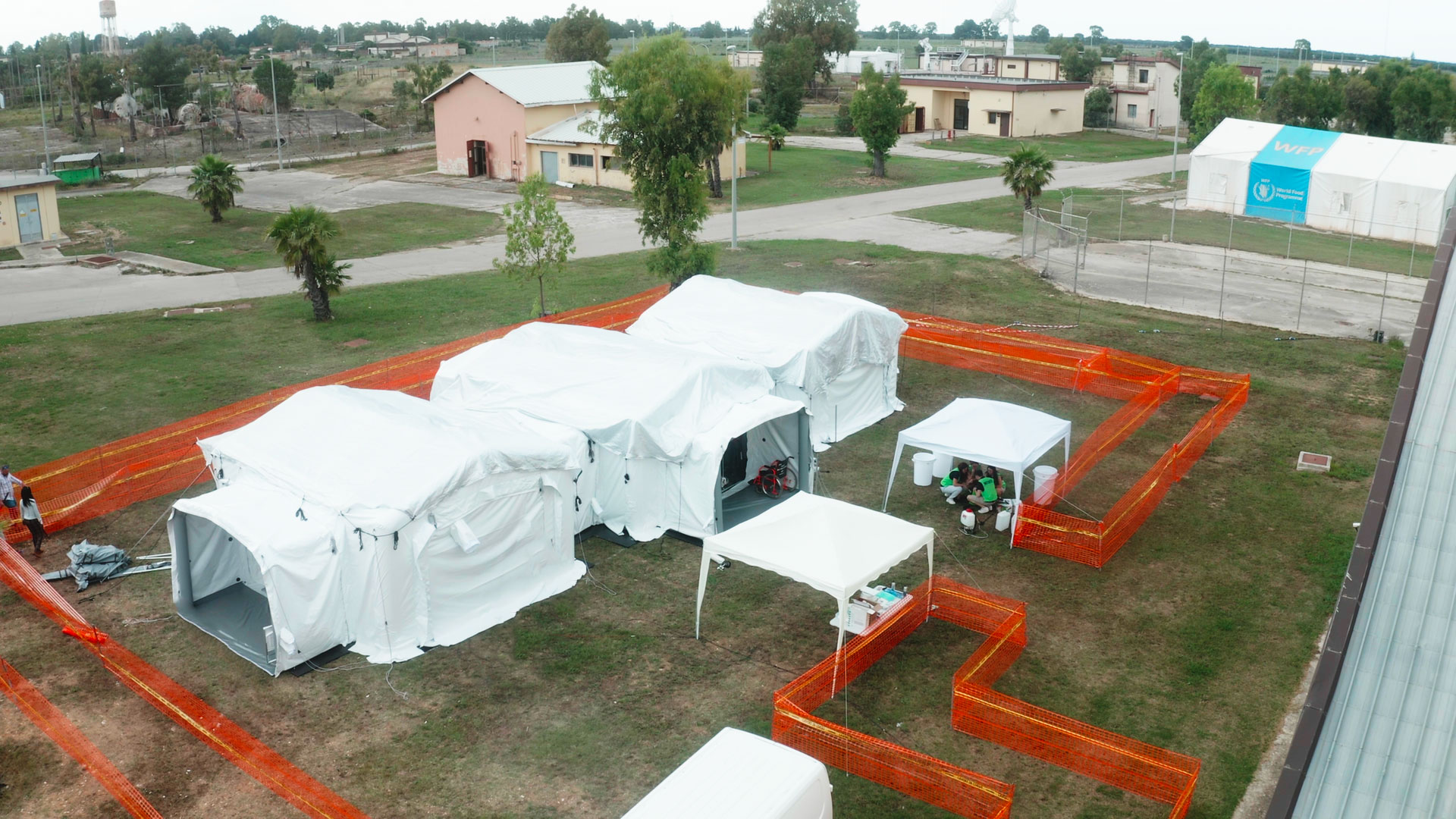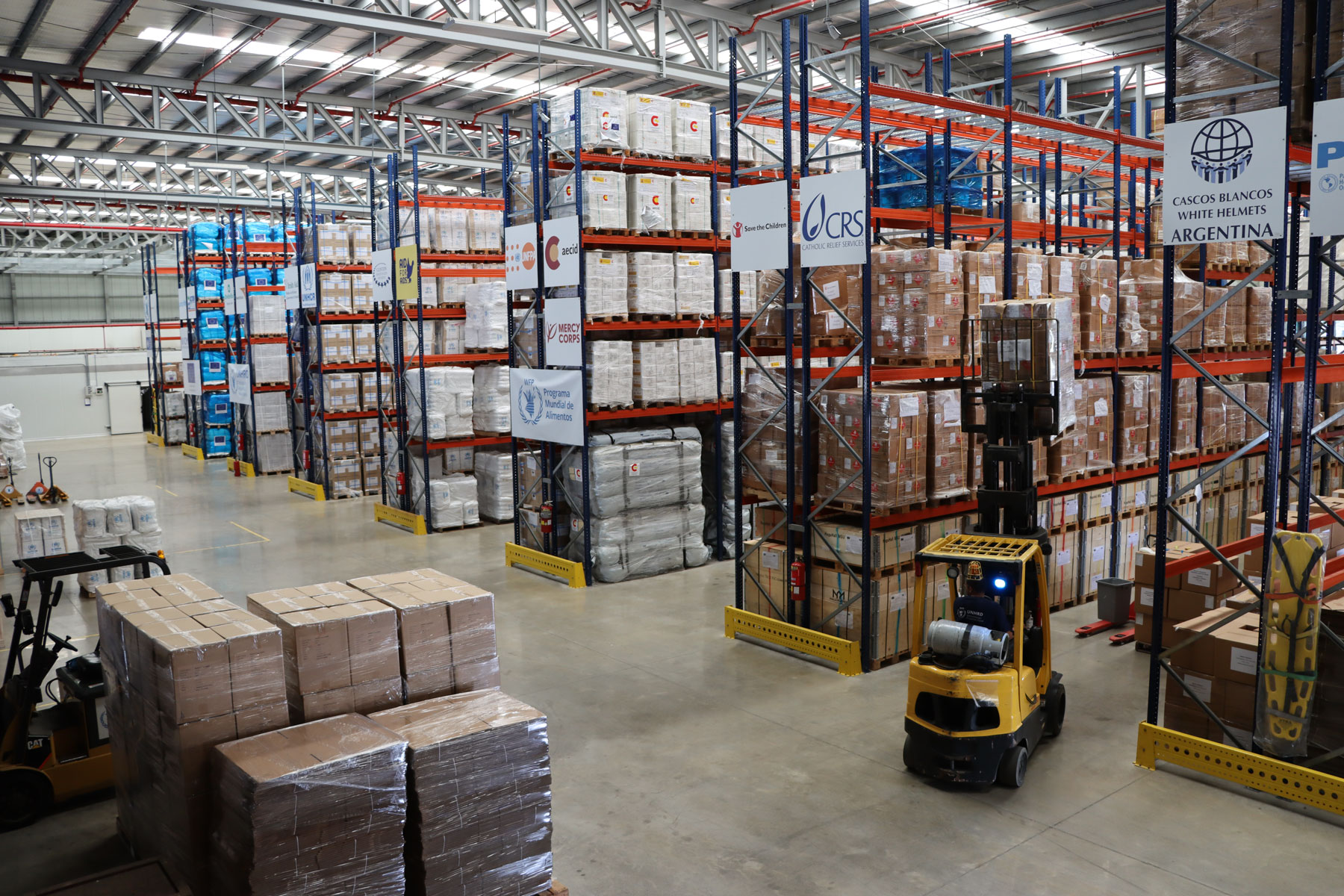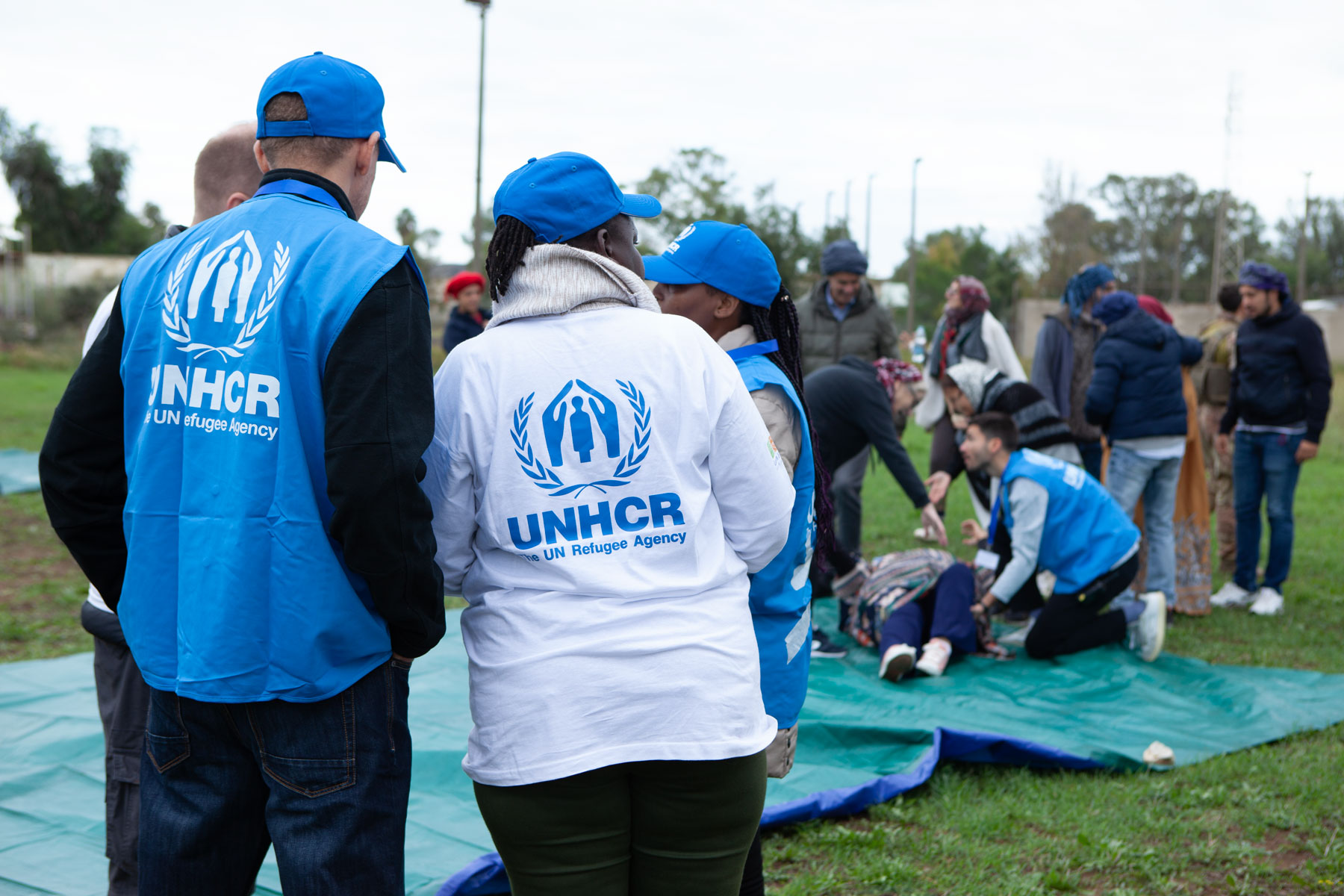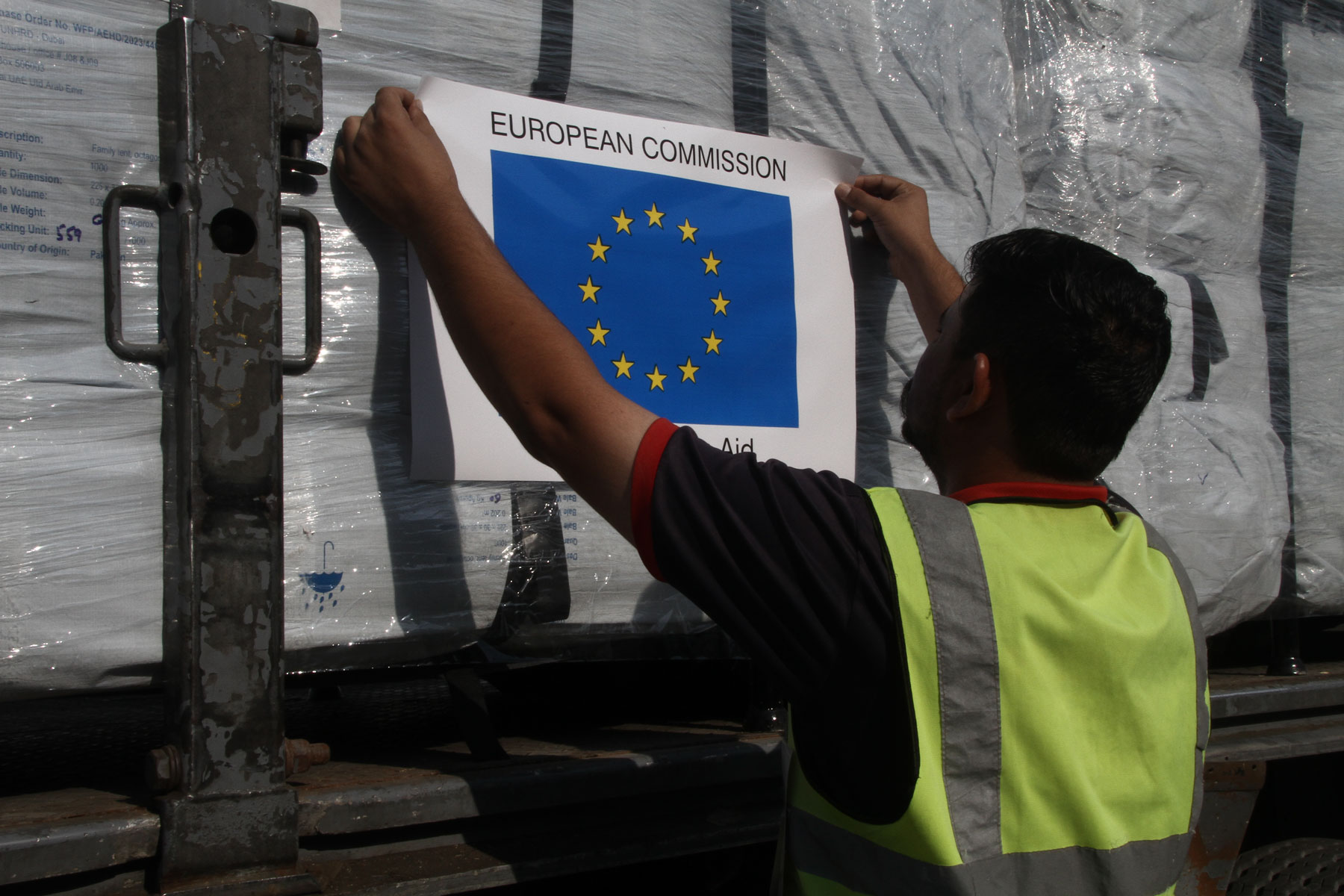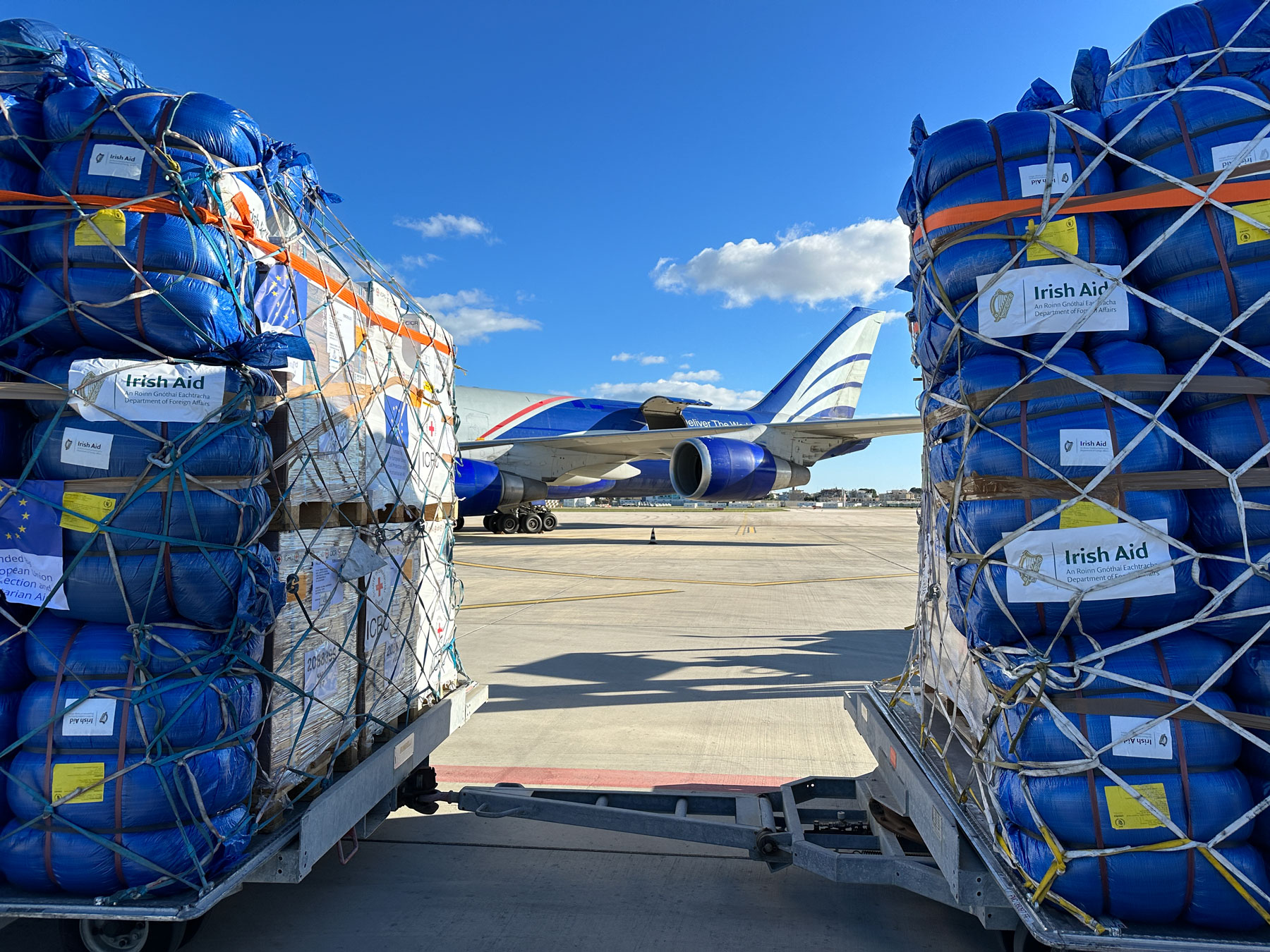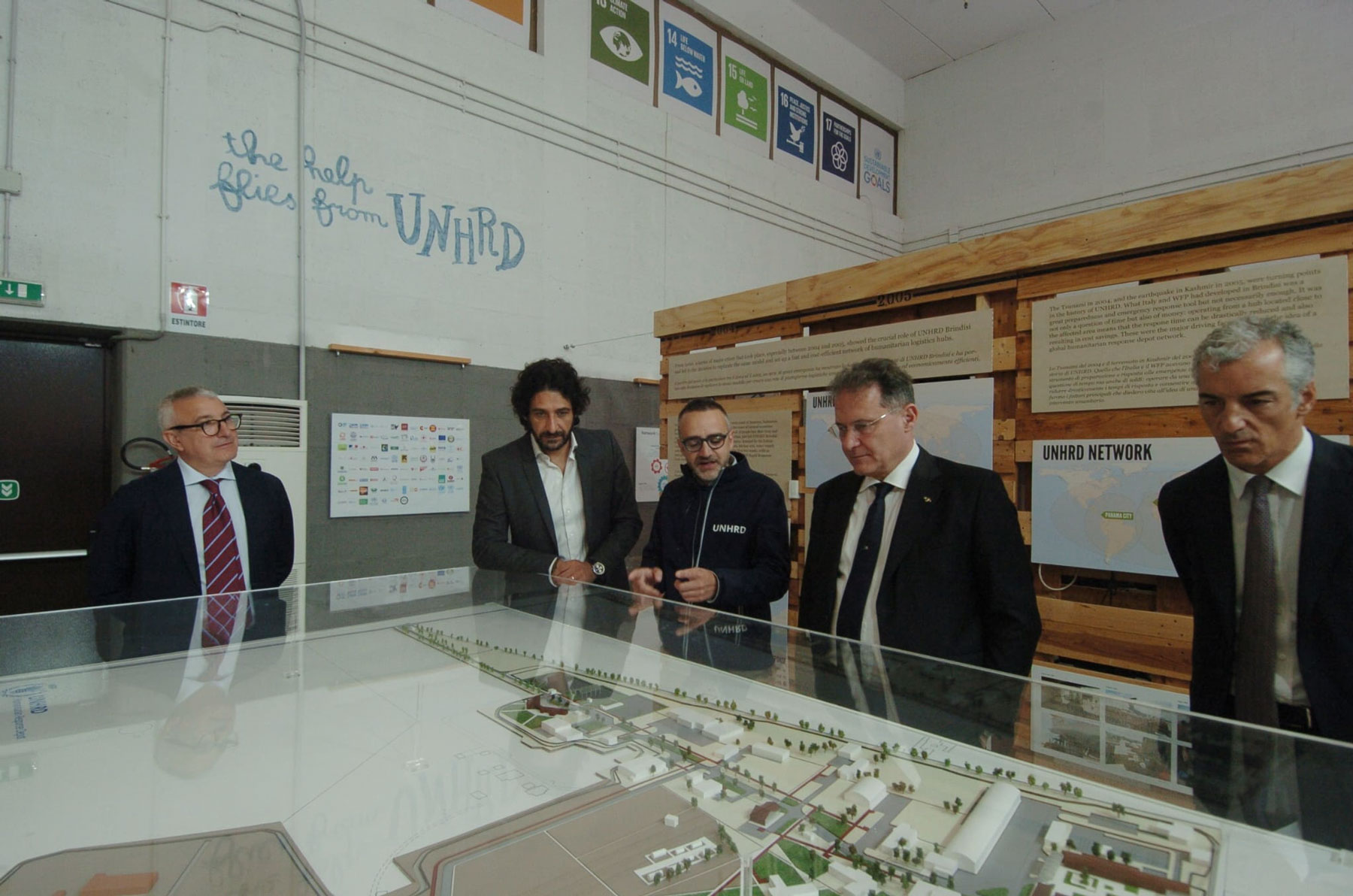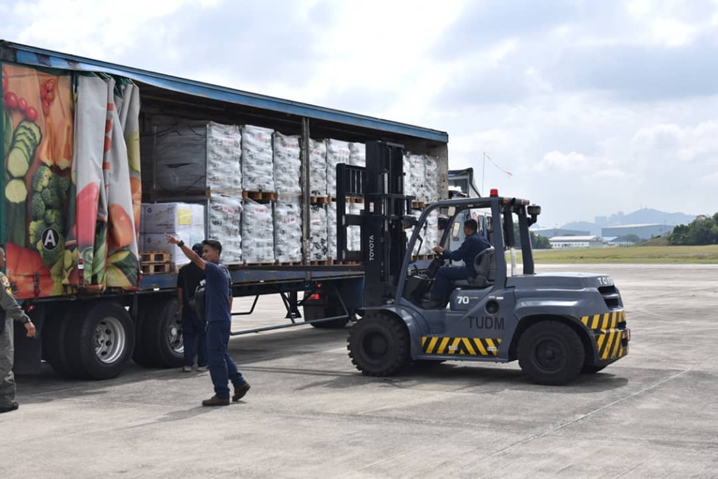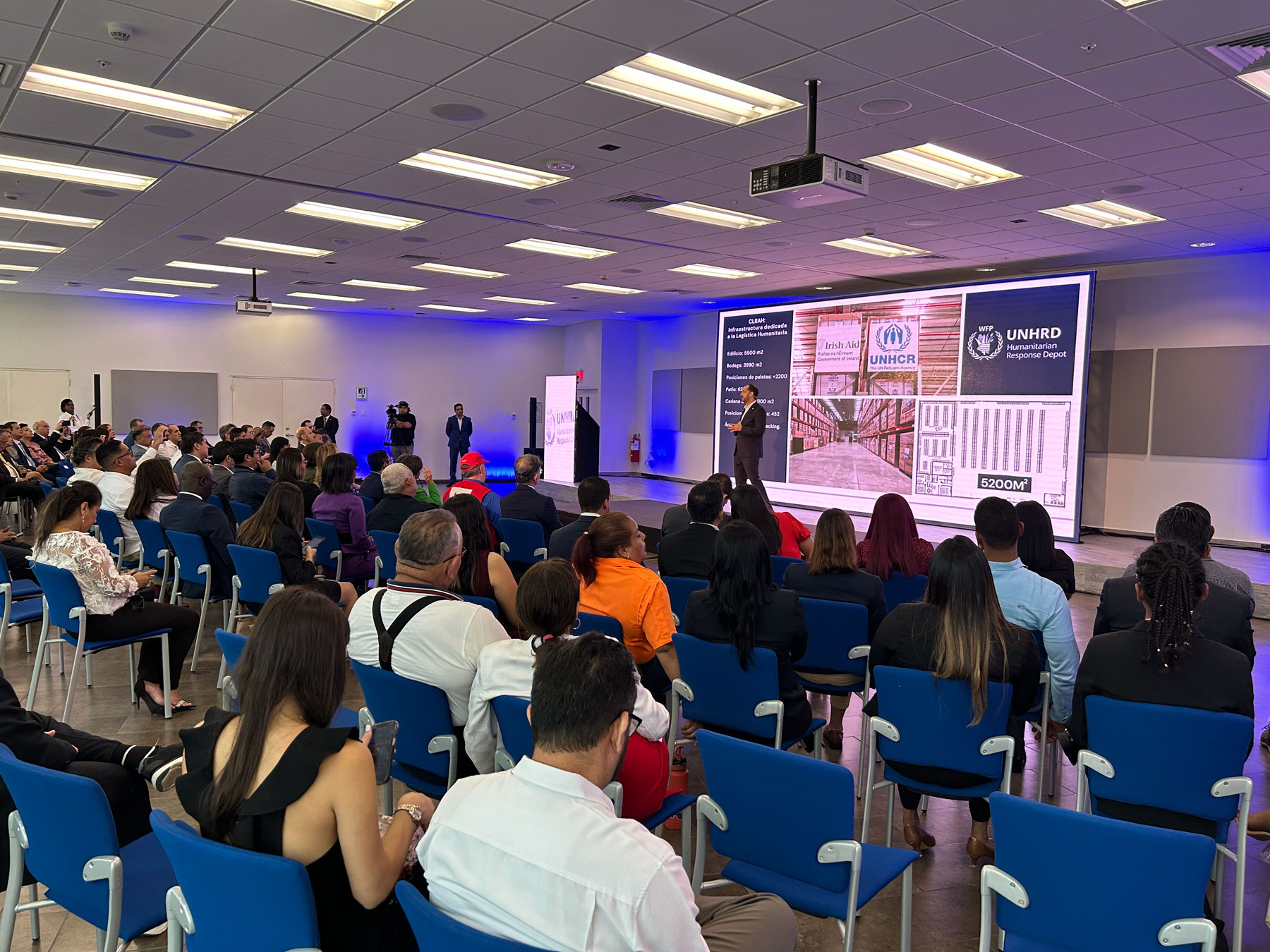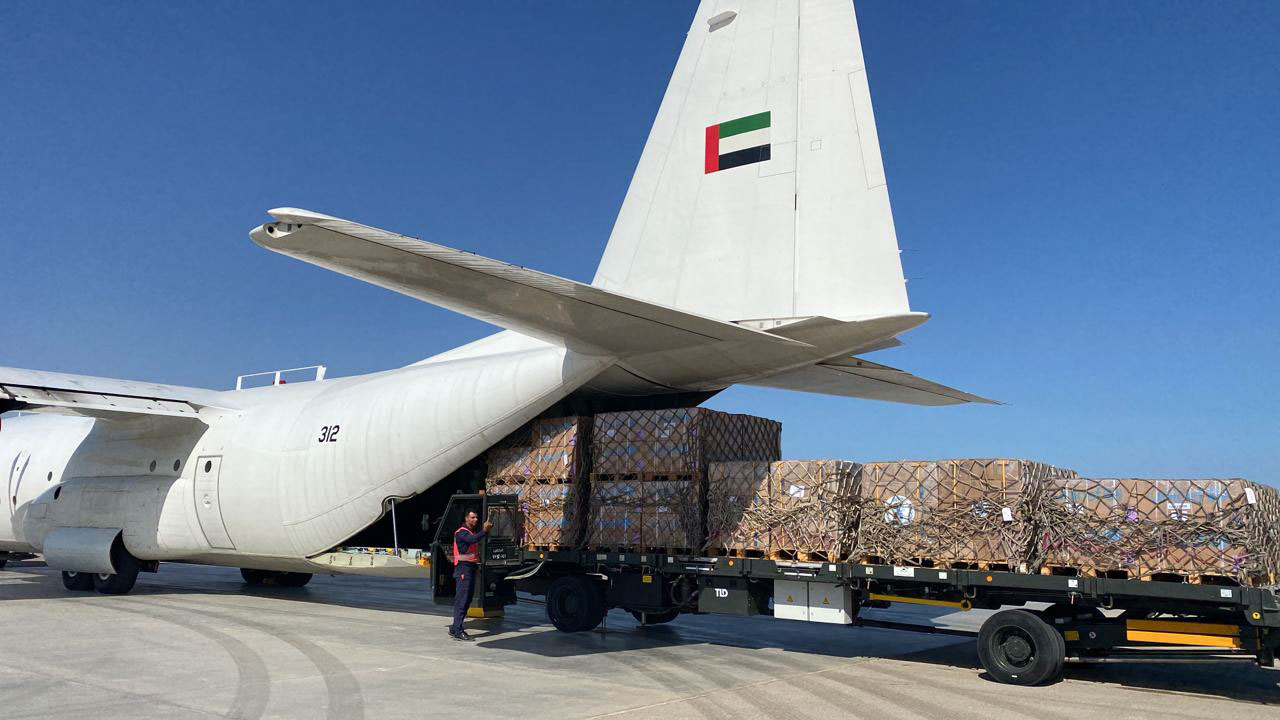04
Strategic partnerships
In 2023, we continued to strengthen our position as a strategic platform by fostering collaboration, building capacity, nurturing partnerships and encouraging innovation within the international humanitarian community, at the same time as facilitating critical initiatives aimed at enhancing emergency preparedness and response efforts.
In June 2023, 75 participants from 25 organizations, including UN agencies, NGOs, academia and local health authorities, gathered at UNHRD Brindisi to test the prototype of an infectious disease treatment module (IDTM).
The module was designed and developed as part of INITIATE, the initiative co-led by WFP and the World Health Organization (WHO) and implemented through UNHRD. INITIATE brings together emergency actors, research and academic institutions to develop innovative solutions for tackling humanitarian emergencies, including outbreaks of infectious diseases.
Since the workshop held in 2022, where the key components of the IDTM were identified, the UNHRD Lab has worked closely with the INITIATE design team to start configuring the system. The first prototype was assessed during production in May 2023 and then delivered to UNHRD Brindisi where partners gathered to install and test it. The drill exercise, with logistics and medical scenarios designed in collaboration with the University of Tübingen (Germany), ran over five days in June 2023. It gave emergency response professionals, including field practitioners, logisticians and health officials from the Democratic Republic of the Congo, Guinea, Malawi and Uganda, the opportunity to assess the functionality of the system in stress scenarios.
The design team is now using feedback from the drill test to modify the prototype before further testing in a simulation exercise in a field location. This will also provide opportunities to develop a playbook for installation, usage and maintenance as well as training scenarios, and to socializing the innovation. INITIATE partner organizations are then expected to stock units across UNHRD hubs ready for rapid dispatch at the onset of an emergency.
Our research and development unit, the UNHRD Lab, has played a fundamental role in INITIATE since its seeds were planted in the early stages of the COVID-19 outbreak.
Throughout the development and testing of the IDTM, the UNHRD Lab contributed expertise in deep field logistics, industrial design and market research to ensure that the structure met some key requirements: rapidly deployable, easily transportable, extendable, self-contained and self-sufficient. Find out more about our contribution in this video.
In the months following the first installation and drills, the UNHRD Lab has collaborated with partners to test the prototype in a realistic environment at our Brindisi hub. These findings – including relating to weather mitigation, ventilation, structural mechanics, repair kit practicality and spare parts composition – will be incorporated into the second prototype.


Stock Management
Task Force
In April 2023, the UNHRD’s Stock Management Taskforce kicked off its activities. Launched at the Global Partner Meeting in Brindisi in October 2022, this initiative brings together the complementary strengths and mandates of UNHRD’s partner community to develop criteria and procedures for managing stock.
The taskforce includes representatives from seven organizations: WHO, UNICEF, UNHCR, ShelterBox, the Adventist Development and Relief Agency (ADRA), ACF and the Emergency Supply Pre-Positioning Strategy Working Group (ESUPS).
Step one was to analyse UNHRD data covering the past six years to identify the core relief items needed in the first 90 days of emergency response. Based on their knowledge and experience, the partners refined this information by type of crisis and most shipped items.
The next step was to start an ongoing consultation with the wider humanitarian community to further refine the list of core items and assess stock prepositioning strategies, including the loan and borrowing of items, as well as gauging levels of interest in cooperating with the stock optimization plan.
The overall objective is to identify a list of first priority core relief items and equipment, define minimum required specifications, identify ceilings and propose recommendations for managing stock prepositioning which all partners can then follow. The goal is to ensure an effective, cost-efficient and timely response to future humanitarian crises with no duplication of effort.
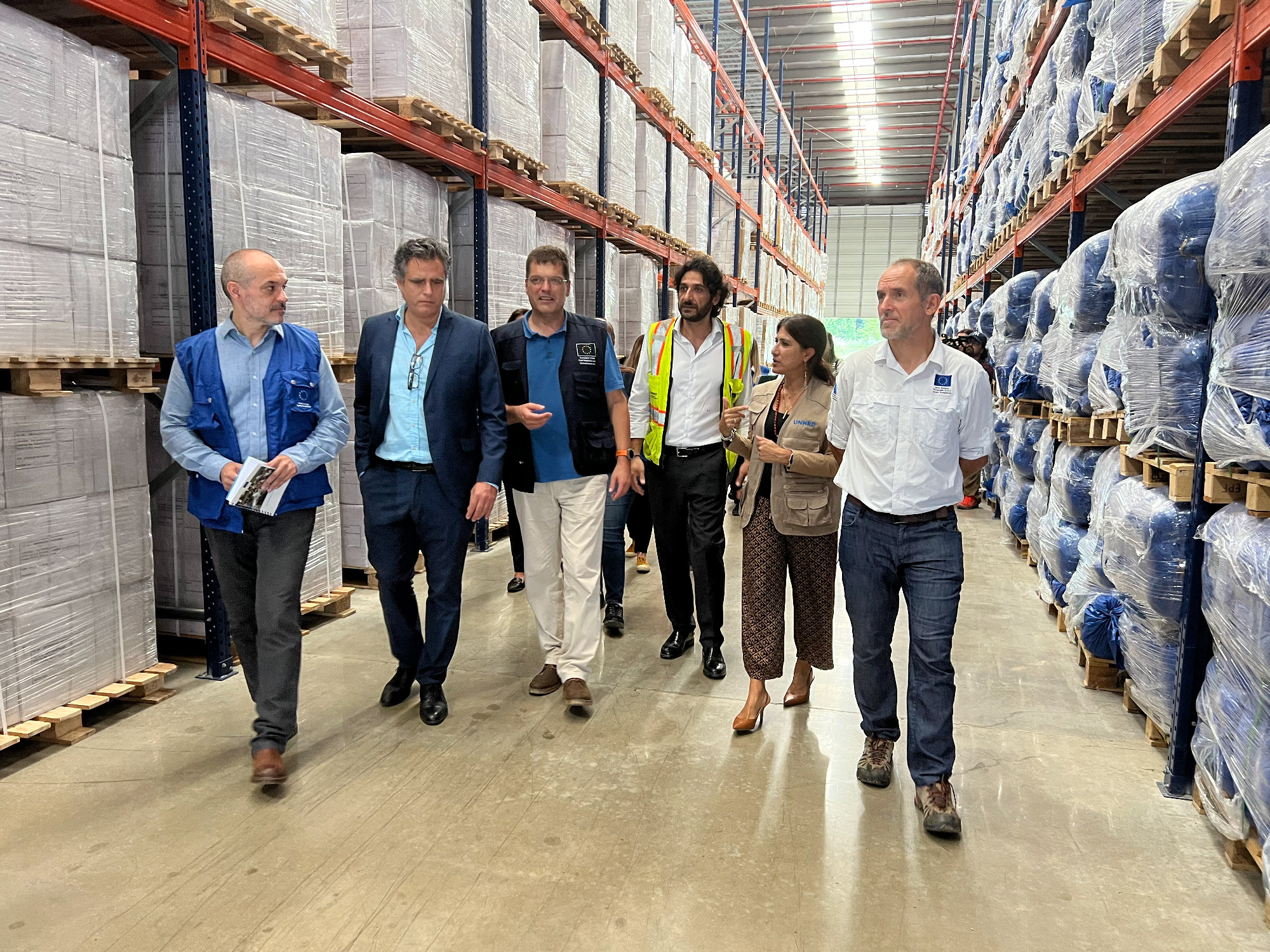
UNHCR Workshops on
Emergency Management
In March 2023, UNHCR organized two sessions of the Workshop on Emergency Management (WEM) at UNHRD Brindisi. Building on their successful roll out, two additional sessions were organized in November. In total, 160 participants from across the organization came together for training on the UNHCR’s role and responsibilities in an emergency response situation.
The WEM is a flagship UNHCR training, which includes classroom sessions and exercises, scenario-based simulations, and practical skills training exercises. UNHCR has recognized UNHRD Brindisi as the ideal location thanks to facilities including a newly upgraded training centre, unique premises offering extensive space for specialized trainings, base camps and on-site accommodation, and the long-standing experience of our staff.
UNHCR and all partners organizing simulation exercises at UNHRD Brindisi also recognize the invaluable participation, facilitated by UNHRD, of local authorities and organizations which contribute to reproducing realistic scenarios. The Italian Navy’s “San Marco Marine Brigade” and the Italian Red Cross are among those who join the drills to reproduce their roles or play the parts of other actors involved in a humanitarian crisis. In October, with a view to hosting frequent WEM sessions and training activities at UNHRD Brindisi, UNHCR expanded on its existing Technical Agreement with WFP for the provision of UNHRD’s services, signed in March 2008, to strengthen partnerships in this area.
Training services
In 2023, our hubs in Accra, Brindisi and Kuala Lumpur hosted and provided services to 24 training activities and workshops forsome 950 participants, including from the International Federation of Red Cross and Red Crescent Societies (IFRC), Malaysia National Disaster Management Agency (NADMA), Medair, Médecins Sans Frontières (MSF), UNHCR, WFP Emergency division, Global Fleet, Global Logistics Cluster and other divisions and units.
We joined the AHA Centre to co-facilitate the ASEAN – Emergency Response and Assessment Team (ERAT) Level 2 Course on Humanitarian Logistics in Singapore. The 30 participants joined a growing pool of certified specialists who stand ready to support the National Disaster Management Organizations of ASEANMember States in responding tocrises across the region.
Specialized trainings
In November, as part of its specialized training offer, UNHRD successfully delivered the first edition of a Logs Base Lab in Brindisi with 14 WFP participants from 11 country offices. The workshop included technical training on how to install the latest innovative structures for emergency logistics bases, including a semi-permanent storage unit with solar panels and prefabs. Participants shared their experiences and ideas for future training courses to ensure we have capacity to efficiently install logistics bases in emergencies. Building a capacity strengthening pathway, UNHRD also supported the deployment of workshop participants to Al-Arish, Egypt as part of the response to the humanitarian emergency in Gaza.
05
Donors
In 2023, new funding from host countries such as Panama and the United Arab Emirates ensured that contributions reached their highest level since the expansion of the UNHRD Network in 2006. Donors also increased their strategic operational support, offering airlifts to partners and the wider humanitarian community at the onset of emergencies and through the early response period.
Thanks to the space made available by our host governments, UNHRD partners saved, on average, US$8.4 million in storage fees globally in 2023.

European Union
In 2023, the EU established new regional humanitarian stockpiles at UNHRD hubs in Brindisi, Dubai and Kuala Lumpur. The EU is also offering an increasing number of flights to facilitate partners’ response to emergencies, including through UNHRD.
The new stockpiles are implemented by ECHO and include kits, like the first one launched at UNHRD Panama in October 2022, kits for providing emergency shelter, hygiene kits, water and sanitation items and equipment such as collapsible tanks. Under the European Humanitarian Response Capacity, the EU makes these stockpiled items available free of charge and facilitates their air transport for the benefit of the wider humanitarian partner community. In 2023, UNHRD managed 35 flights and air rotations by the EU dispatching some 803 mt of relief items, health supplies and equipment to emergency responses in Afghanistan, Chad, the Democratic Republic of the Congo, Gaza, Nepal, Sudan, Syria and Türkiye.
EU supports logistics lifeline for people in Gaza
Throughout November and December 2023, ECHO supported the expansion of the Egyptian Red Crescent’s logistics capacity in the north-east of Egypt through the WFP-led Logistics Cluster and UNHRD. This vital support has expanded inter-agency storage and cargo consolidation operations at multiple locations in Egypt and facilitated transport of food and lifesaving assistance to the people of Gaza. Read more.

Irish Aid
For more than 15 years, Ireland has relied on our supply chain solutions for its relief efforts and made annual contributions to the running costs of our Network.
In 2023, at the onset of the response to the Türkiye–Syria earthquake, we supported Ireland, a longstanding UNHRD donor, in their largest ever deployment of emergency stocks. In the following days, Ireland requested three further airlifts to support the affected population in north-west Syria. During the year, we also shipped further vital relief items for the crises in Gaza, Afghanistan and South Sudan.

Italy
On 4 May 2023, Edmondo Cirielli, Deputy Minister of Foreign Affairs and International Cooperation of Italy (MAECI), visited UNHRD Brindisi. On this occasion, he renewed Italy’s commitment to support the ambitious expansion and upgrade of the hub.
Thanks to funding provided by MAECI, the final designs for the hub are now complete. The next step is to run a tender and begin construction works for priority development areas, including security fencing around the new area for training and simulations.
In parallel with this work, WFP continued to support the renovation of the training centre, which was completed in August 2023. This has already led to an uptick in bookings for trainings, workshops and simulations exercises. As part of the same improvement programme, we also procured electric vehicles, bikes and scooters reflecting our commitment to sustainability goals.
Throughout 2023, MAECI has continued to rely on UNHRD to dispatch aid for people in need including in Gaza, with the Italian Air Force providing two flights, and in Afghanistan, Libya and Somalia. Just a few days after the initial Türkiye–Syria earthquakes, the Italian Navy and Italian Civil Protection offered UNHRD partners cargo space on a vessel sailing from Brindisi. Italian NGO Medici con l’Africa took this opportunity to ship hygiene kits and kitchen sets.

Malaysia
The Government of Malaysia’s annual support is vital to the running of our hub in Kuala Lumpur, a key strategic location in the region.
In 2023, in addition to enabling timely response efforts in the region, the Kuala Lumpur hub continued to support capacity-building activities, training programmes and south-south collaboration including with key partners such as the AHA Centre, NADMA, the Brunei Darussalam’s National Disaster Management Centre (NDMC) and HELP Logistics.

Panama
On 21 December, WFP joined the fifth anniversary celebrations of the Regional Logistics Centre for Humanitarian Assistance (CLRAH) in Panama. The ceremony was an opportunity to recognize the support of the Ministry of Government of Panama which generously hosts the UNHRD hub within the CLRAH and, in 2023, contributed for the first time to its running costs.
Speaking on behalf of UNHRD, Lola Castro, WFP Regional Director for Latin America and the Caribbean, reflected on the long-standing partnership between UNHRD and the Government of Panama since the establishment of UNHRD Panama in 2007, through the COVID-19 response and the move to the CLRAH.
For more than 15 years, Panama has demonstrated its commitment to the humanitarian sector and its vital support to UNHRD by providing extensive premises, especially during the COVID-19 response when our hub continued to use existing facilities at Pacífico International Airport as well as within the newly operational CRLAH. Most recently, the Government of Panama has assumed leadership of the Group of Friends of UNHRD and made its first contribution to the running costs of our hub.

United Arab
Emirates
In 2023, the Government of Dubai approved its first contribution to cover the running costs of our local UNHRD hub. The United Arab Emirates also continued to facilitate the transportation of humanitarian partners’ vital supplies to onset crises.
For many years the International Humanitarian City (IHC) in Dubai, in addition to generously hosting our hub, has provided free air transport to emergency responses. Last year was no different: from the Türkiye–Syria earthquakes to the floods in Libya and the conflict in Gaza, IHC offered timely support to WFP and the wider humanitarian community to airlift emergency food, including fortified biscuits and ready-to-eat food, relief items and support equipment dispatched by UNHRD Dubai.The Ministry of Foreign Affairs and International Cooperation of the United Arab Emirates offered similar strategic operational support by donating 8,250 ready-to-eat food parcels (165 mt) to WFP, which were handled by UNHRD, and transporting them by air to Egypt to support the people of Gaza.
07
The year ahead
In 2024, we will continue our focus on the priority areas identified within our strategy for 2022–2025, including workforce, partnerships, digitization and sustainability.
As we continue to improve our performance in core operations and strengthen our relationship-driven culture, the most critical priority will be to implement our new organizational structure. We will continue to engage more with local and regional partners through innovation journeys and targeted outreach during in-person workshops and meetings and through UNHRD Lab projects. The suite of tools available to partners, including digital tools, will also be enhanced to give users a more seamless experience when requesting services, such as booking training facilities, as well as better supporting decision making. Activities focusing on sustainability will continue and become more integrated into all aspects of operations and facilities through innovative solutions as well as works to upgrade the hubs.
Operations
Strengthen tools and approaches for providing excellent support to partners. Optimize use of space through stocks taskforce.
Workforce
Implement organizational realignment, including support to staff for learning and development.
Partnerships
Expand value-based partnerships through innovation journey and R&D projects. Foster inclusivity of local/regional bodies in the Network.
Digitization
Leverage data to support decision making and improve systems to enhance service offering to partners.
Sustainability
Engage with partners, donors, private sector to further goal of building a sustainable UNHRD with minimum climate impact.


